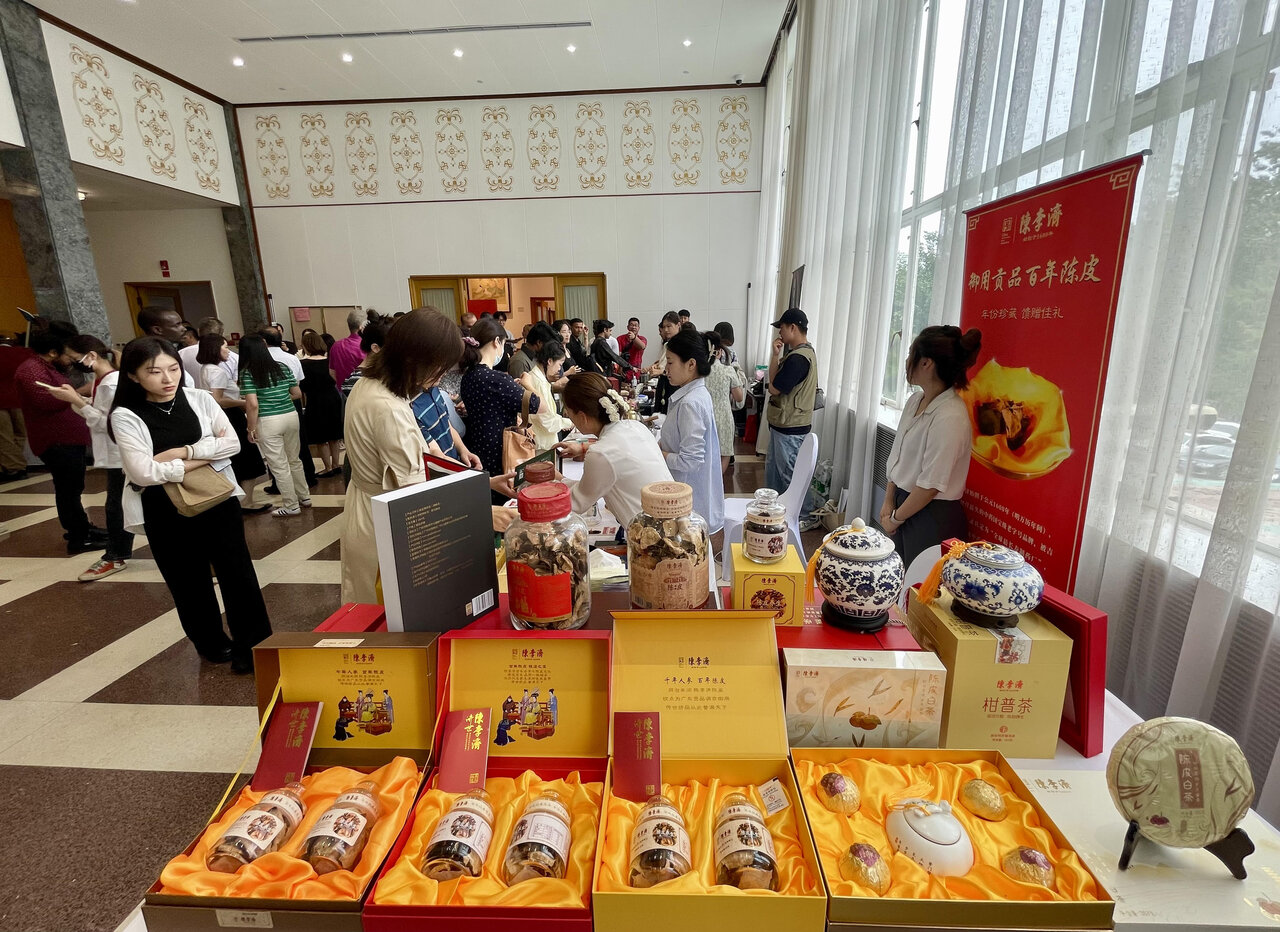Foreign media visit Chinese Medicine Culture related to “Belt & Road” exhibit

BEIJING- A number of journalists from some Asian, African, and Oceanic countries visited the Exhibition on Chinese Medicine Culture related to the “Belt and Road” held at Beijing International Club.
The visit to the exhibition was arranged by the China International Press Communication Center (CIPCC).
During their visit, the journalists got familiar with Traditional Chinese Medicine (TCM) and tasted some medicinal plants and drinks.
They also experienced TCM massage performed by a massage master.
A conference on traditional Chinese medicine was also held on the sidelines of the exhibition, during which the journalists got acquainted with the TCM, and their questions in this field were answered by a Chinese professor who presented a lecture in this regard.
Traditional Chinese medicine (TCM) is an alternative medical practice drawn from traditional medicine in China. It has been described as pseudoscientific, with the majority of its treatments having no known mechanism of action.
Medicine in traditional China encompassed a range of sometimes competing health and healing practices, folk beliefs, literati theory and Confucian philosophy, herbal remedies, food, diet, exercise, medical specializations, and schools of thought. In the early twentieth century, Chinese cultural and political modernizers worked to eliminate traditional practices as backward and unscientific. Traditional practitioners then selected elements of philosophy and practice and organized them into what they called "Chinese medicine"
In the 1950s, the Chinese government sponsored the integration of Chinese and Western medicine, and in the Great Proletarian Cultural Revolution of the 1960s, promoted Chinese medicine as inexpensive and popular. After the opening of relations between the United States and China after 1972, there was great interest in the West for what is now called traditional Chinese medicine (TCM).
TCM is widely used in the Sinosphere. One of the basic tenets is that the body's qi is circulating through channels called meridians having branches connected to bodily organs and functions. There is no evidence that meridians or vital energy exist. Concepts of the body and of disease used in TCM reflect its ancient origins and its emphasis on dynamic processes over material structure, similar to the humoral theory of ancient Greece and ancient Rome.
The doctrines of Chinese medicine are rooted in books such as the Yellow Emperor's Inner Canon and the Treatise on Cold Damage, as well as in cosmological notions such as yin–yang and the five phases.
The "Documentation of Chinese materia medica" (CMM) dates back to around 1,100 BCE when only a few dozen drugs were described. By the end of the 16th century, the number of drugs documented had reached close to 1,900. And by the end of the last century, published records of CMM had reached 12,800 drugs." Starting in the 1950s, these precepts were standardized in the People's Republic of China, including attempts to integrate them with modern notions of anatomy and pathology. In the 1950s, the Chinese government promoted a systematized form of TCM.
Traditional Chinese Medicine has become a new option for patients in countries along the Belt and Road, amid China's promotion of TCM overseas and endeavors at TCM development and cooperation in recent years.
The growing popularity of TCM treatment technologies and the expanding trade in services of TCM indicate that people in Belt and Road countries have confidence in TCM.
As earlier mentioned, the visit to the Exhibition on Chinese Medicine Culture related to the “Belt and Road” was organized by the China International Press Communication Center (CIPCC).
CIPCC, under the China Public Diplomacy Association (CPDA), has initiated a program to build a platform for the media from countries around the world, especially developing countries, to observe China and study development in this country.
In each edition of the program, journalists from all around the world gather together to get familiar with the modern China and exchange their experiences in the field of journalism.
In 2024 edition of the program, started in late February, over 100 journalists from more than 90 countries are participating.
Photo By Mahnaz Abdi
Leave a Comment